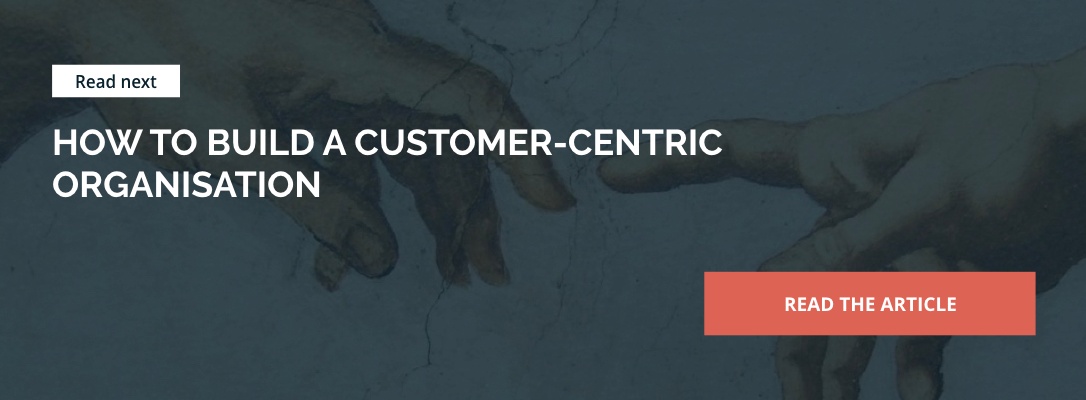In the financial services industry, converting leads to customers is vital. But with the speed of change in the marketing and technology space and in the wake of the Banking Royal Commission, marketing leaders in the finance industry are overwhelmed by the challenge of managing a genuine experience with their target customers, thus improving lead conversion.
Insight: Still on the road to recovery from the impact of the Banking Royal Commission, many financial institutions are struggling to make a profit.
Data: Results in a survey revealed that marketing executives feel the finance industry is “at a low level of technology maturity when it comes to digital strategy and capabilities.” (Merkle)
Key Action Point: Read this article to learn how you can focus on converting leads to customers.
To improve lead conversion, understand what your customers are looking for. In tumultuous financial times, customers are looking for a trustworthy partner that they can believe in.
So what’s next in digital marketing for Financial Services? What follows are four tested methods to turn your financial services leads into customers at far greater rates.
Use Contextual Content to Connect with Prospects
Generic content can only go so far. To truly connect with your marketing prospects, think about how you can customise and contextualise your content. It must adjust and grow to the customer relationship and react to the customer’s actions and needs. Through this, contextual content can be used to deepen the customer’s relationship with the business.
At its simplest, this type of content is something that’s displayed at the right moment. That includes broader campaigns, such as the following:
- Interacting with social media accounts. Through contextual content, links can be displayed that link into social media campaigns. Those who click on social media campaigns will receive content that is geared towards their particular demographic.
- Crafted landing pages. Through paid advertising, companies are able to advertise towards customers making specific searches. The customers found through these searches can click through to landing pages that are specifically crafted for their search queries.
It can also be smaller structured pieces of content within a website itself, such as the following:
- Suggested products and articles, generated by a user’s prior history. These products and articles may also relate to the content that the user is currently browsing.
- Timely discounts and promotions. If users have been browsing specific products or if they have hesitated to make a purchase before, discounts can be targeted towards them.
Ultimately, the goal is to create a marketing and advertising ecosystem that reacts to the customer’s activity and their needs. Through marketing automation, you can deliver customised and contextualised content directly to a potential customer.
Nourish Relationships with Leads through Email Marketing
Email marketing remains one of the most effective ways to build customer and business relationships, with 73% of companies believing that their email ROI is good. Email marketing campaigns are an effective way to get the attention of virtually every demographic, with email rapidly becoming a universal utility.
Email marketing allows a company to build up trust with its customers over time, which is increasingly necessary for lead conversion. The more interactions a customer has with a brand, especially one-on-one, the more likely they will be to engage with that brand further.
When converting leads, there are a few core marketing strategies a financial services company may opt to engage in:
- Targeted emails based on the user’s past actions. If a user, for instance, started through a financial application process but didn’t finish it, they can be sent an email reminding them to log back in.
- Newsletter emails. With the intention to build brand reputation and trust, they can receive relevant and timely updates about the financial services market, as well as personal financial services.
- Drip campaigns. Once a lead has been generated, a sequence of introductory emails can be sent to them, introducing them to products and services and urging them to follow up.
Email marketing works, with 4.24% of customers make purchases through email marketing, compared to 2.49% from social media. Yet to be truly effective, email marketing has to be personal and personalised.
Build Your Lead Scoring Criteria
Which customers are just browsing your services? Which customers are ready to commit? Lead scoring criteria is the method by which you determine when a general lead becomes a hot prospect.
There are many methods of scoring leads, but at their core, all methods are a tally of a customer’s relationship with the brand so far. Once a customer reaches a certain “tipping point, they’re considered ready to make a purchase: they just need a little more engagement.
The Pareto principle states that 80% of your revenue will come from 20% of your customers, and it can be applied to anything — including leads. The top percentage of your leads are going to be the leads that end up committing quickly and bringing in significant revenue. Better lead scoring criteria is designed to drill down to these specific leads.
In recent years, digital marketers are leveraging machine learning and AI algorithms to get more effective lead scores. These algorithms are able to look back on prior customer interactions and determine which interactions indicate readiness to commit.
In a brick-and-mortar financial services business, a customer would be ready to commit once they got in line to speak to a customer service representative. Similarly, in the digital space, a financial services company may find that customers are ready to commit once they stop browsing informational pages and start looking directly at applications.
Measure Customer Happiness with NPS
Once a financial services company has secured a customer, it needs to be able to keep that customer. Customer happiness and customer loyalty are the driving force behind whether a customer will choose to stay with a business.
An Active Net Promoter Score is a percentage of how many customers are likely to recommend a financial service to their friends, coworkers, or family. Overall, the financial services average NPS is 50, ranking 14 out of 24 industries.
Conclusion
Financial services companies have a long road ahead of them — building up their reputation and gaining consumer trust. But though it may be a long road, the destination is more than worthwhile.
By using contextual content, engaging consumers one-on-one, and empathising with the consumer’s needs, financial services companies will be able to more readily turn leads to customers.















